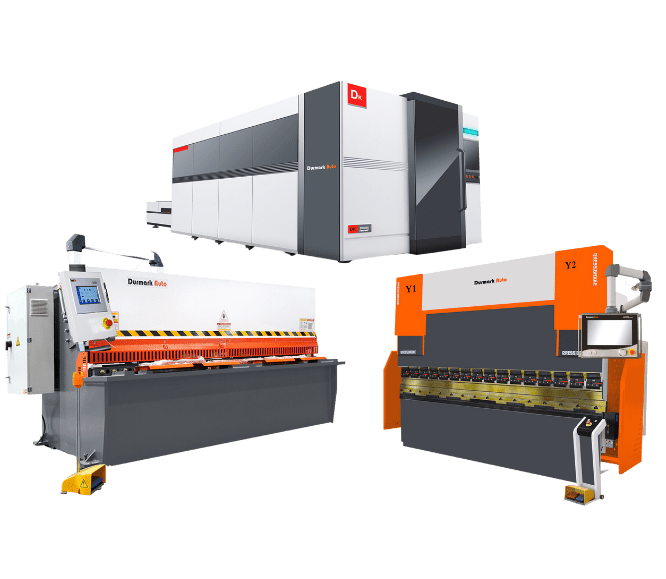
Request a Quote

Request a Quote

Table of contents:
In the field of modern industry and construction, the bending process of pipes is a crucial process, which is used to meet the needs of various complex pipe structures. To achieve efficient and precise pipe bending, tube bending machines have become essential equipment. This article will give you an in-depth analysis of the tube bending machine, discuss its working principle, classification and application fields, and provide detailed operation and maintenance guidelines. Whether you are a novice or a professional, we hope to bring you useful knowledge and guidance through this article.
Pipe bending is a metal processing process that bends pipes into various shapes to meet different purposes. This process is widely used in the field of metal fabrication. Tubes formed by the tube bending process are not limited to any particular metal, but are suitable for different materials, including most metals and alloys.
When it comes to pipe bending, there is no set method, but many different options to achieve the pipe bending effect. Each method has its own unique advantages, disadvantages and prices.
One of the common methods of pipe bending is by using a pipe bender. The pipe bender is capable of precise bending of pipes and is suitable for mass production. Another method is manual pipe bending, which bends pipes by hand, which is suitable for processing needs of small batches and special shapes. There are also some advanced pipe bending techniques, such as cold pipe bending and hot pipe bending, which can achieve more complex pipe bending, but usually require more specialized equipment and technology.
Each pipe bending method has its applicable scenarios, and the selection of the appropriate method depends on factors such as specific processing requirements, pipe materials, and costs. Understanding different pipe bending methods can help practitioners in the metal processing industry make informed decisions based on actual conditions and improve production efficiency and quality of pipe processing.
The main structure of the tube bending machine is usually composed of a base, a bending rod, a hydraulic cylinder, a guide rail and a control system. The bending rod is the main component used to apply force to bend the pipe.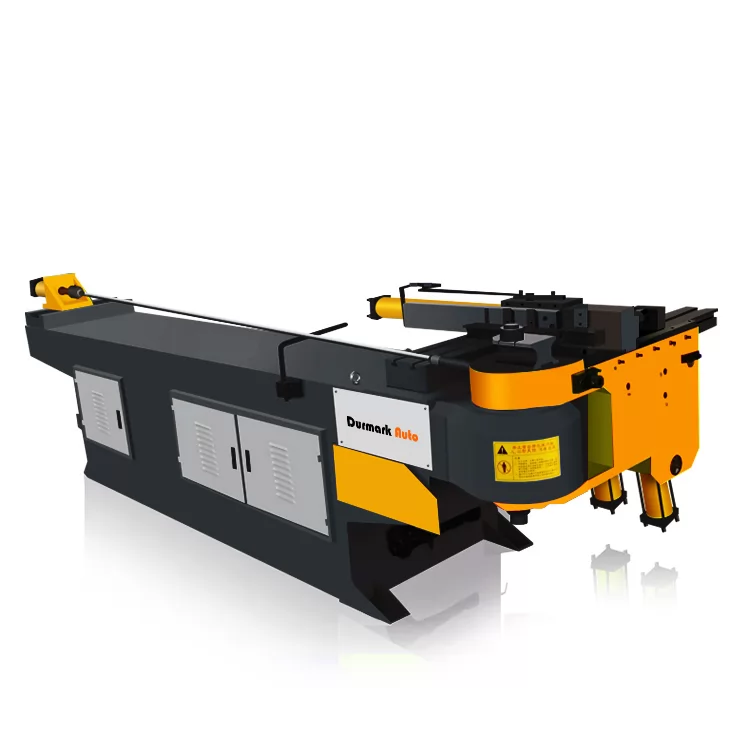
During operation, the pipe is clamped on the bending rod, usually with clamps or chucks to fix the two ends of the pipe, ensuring that the pipe is firmly placed on the bending rod.
tube bending machines are usually equipped with a hydraulic system to provide the pressure applied by the bending rod. The hydraulic system consists of hydraulic cylinders, oil pumps, control valves and oil tanks.
When the hydraulic system is activated, the pressure in the hydraulic cylinder will be transferred to the bending rod to generate a certain force. This force causes the pipe to bend and bend according to preset angles and curves.
tube bending machines are usually equipped with a control system to adjust the force applied by the bending rod and the bending angle of the pipe. The operator sets the required bending parameters through the control system to ensure precise control of the bending process.
Hydraulic Tube Bending Machine: This is the most common and widely used type of tube bending machine. It bends the pipe by applying force through the hydraulic system. Hydraulic pipe benders are suitable for bending most pipe materials and larger diameter pipes.
Mechanical Pipe Benders: Mechanical pipe benders use mechanical force to bend pipe. It is usually operated manually or electrically, and is suitable for some small diameter and simple curved pipes.
Electric pipe bender: Electric pipe bender is a semi-automatic type that is driven by electric power to complete the pipe bending process. It is generally suitable for medium diameter pipes and some more complex curved shapes.
CNC tube bending machine: CNC (computer numerical control) tube bending machine is controlled by computer numerical control system, which can realize high automation and precise control. It is suitable for pipe bending with complex shapes and high-precision requirements, and is often used in industries such as automobiles and aerospace.
Manual tube bending machine: Manual tube bending machine is the simplest and economical type, the operator completes the bending of the pipe by manually operating the bending rod. It is suitable for some simple pipe processing and small batch production.
Cold-formed tube bending machine: cold-formed tube bending machine is a special type that bends pipes at room temperature and is suitable for pipes that require high material hardness and performance, such as stainless steel.
Hot bending tube bending machine: The hot bending tube bending machine bends the pipe by heating, which is suitable for pipes with high hardness and large diameter pipes.
Manual Tube Bending Machine:
Features: Easy to use, suitable for small batch production and simple bending needs.
Model: Manual tube bending machines usually do not have a unified model, and most of them are distinguished according to their bending capacity and applicable pipe diameter.
Electric Tube Bending Machine:
Features: It adopts electric drive, easy to operate, and is suitable for processing pipes with medium diameters and complex curved shapes.
Model: Common models include DHW-32, DHW-76, etc., where the number usually represents the diameter of the pipe with the maximum bending capacity.
Hydraulic tube bending machine:
Features: The hydraulic system is used to provide strong bending force, which is suitable for bending pipes with large diameters and complex shapes.
Model: Common models include GW-50, GW-89, etc., and the number usually represents the diameter of the pipe with the maximum bending capacity.
CNC Tube Bending Machine:
Features: It adopts computer numerical control system control to achieve high automation and precise control, and is suitable for pipe bending with complex shapes and high precision requirements.
Model: Common models include CNC38, CNC80, etc., where the numbers usually represent the diameter of the pipe with the maximum bending capacity.
Cold Formed Tube Bending Machine:
Features: Bending pipes at room temperature, suitable for pipes with high requirements on material hardness and performance, such as stainless steel, etc.
Model: Common models include CB-38, CB-90, etc., where the numbers usually represent the diameter of the pipe with the maximum bending capacity.
Hot bending tube bending machine:
Features: The pipe is bent by heating, which is suitable for pipes with high hardness and large diameter pipes.
Model: Common models include HB-50, HB-100, etc., where the number usually represents the diameter of the pipe with the maximum bending capacity.
Tube Bending Machine Applications in Manufacturing
Aerospace: In the field of aerospace, it is necessary to manufacture pipes of various complex shapes, such as hydraulic system pipes, gas system pipes, etc. tube bending machines can achieve precise bending of these pipes, ensuring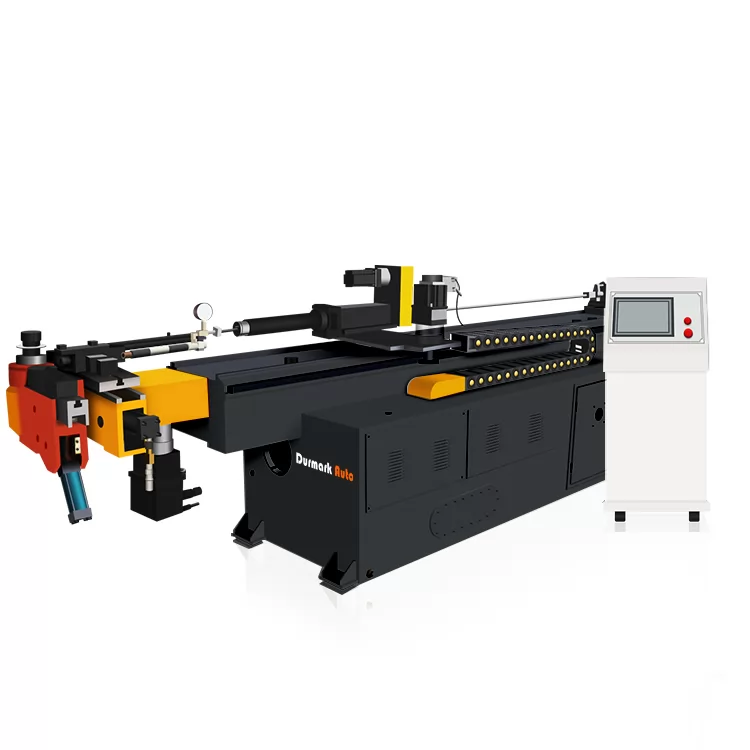 their safety and reliability in flight.
their safety and reliability in flight.
Automobile manufacturing: In the process of automobile manufacturing, a large number of pipelines are required for fuel systems, braking systems, cooling systems, etc. Tube bending machines play an important role in automotive manufacturing, capable of producing precision tubes that meet automotive design requirements.
Oil and gas industry: The oil and gas industry requires a large number of pipelines for transporting oil, gas and liquids. tube bending machines are able to precisely bend these pipes to accommodate complex pipe layouts and terrain conditions.
Power industry: In power plants and power equipment manufacturing, a large number of pipes are required to transport media such as cooling water and steam. The tube bending machine can meet the processing needs of pipes of different sizes and shapes.
Architectural and structural engineering: In the field of construction, it is often necessary to use curved pipes to meet the needs of complex building structures, such as bridges, high-rise buildings and industrial facilities. tube bending machines are able to provide customized pipe processing solutions for these construction projects.
Pipe bender applications in the construction industry
Water supply and drainage system: The water supply and drainage system of a building involves a large number of pipes, including water supply pipes, drainage pipes, sewage pipes, etc. These pipes need to be bent according to the building structure and design requirements to accommodate complex layouts and building shapes. tube bending machines are able to precisely bend these pipes to ensure the proper functioning of water supply and drainage systems.
HVAC systems: HVAC systems need to use a large number of pipes to transport hot and cold media, such as air-conditioning water pipes, cooling water pipes, etc. These pipes need to be bent according to the building structure and air conditioning layout to meet the heating and cooling needs of different rooms and areas. tube bending machines are able to provide custom bending of these pipes to ensure efficient operation of air conditioning systems.
Building structure: In some special building structures, it is necessary to use curved pipes to meet complex building shapes and design requirements, such as curved ceilings, curved stairs, etc. The tube bending machine can provide customized pipe processing solutions for these building structures, making the architectural form more unique and beautiful.
Firefighting system: The firefighting system of a building needs to use a large number of pipes for fire emergency rescue, such as fire hose pipes, sprinkler system pipes, etc. These pipes need to be bent according to the layout of the building and fire protection needs to ensure the efficient operation of the fire protection system. The tube bending machine can provide accurate pipe processing for the fire protection system to ensure fire safety.
Pipe bender applications in the automotive industry
Fuel system: The fuel system of a car includes fuel supply pipes, fuel tank pipes, etc. These pipes need to be bent precisely according to the structure and design requirements of the car to ensure the supply and transmission of fuel. The tube bending machine can provide high-precision bending processing for these pipes to ensure the stable and safe operation of the fuel system.
Brake system: The brake system of a car requires a large number of brake pipes for the transmission of brake fluid. These pipes need to withstand high pressure and high temperature during vehicle braking, so the requirements for the bending quality of the pipes are relatively high. The tube bending machine can meet the high-precision processing requirements of the brake pipe and ensure the reliability and sensitivity of the brake system.
Cooling system: The cooling system of a car includes radiator pipes, coolant pipes, etc. These pipes need to be bent precisely according to the layout of the engine and radiator to ensure the circulation of coolant and the effect of heat dissipation. The tube bending machine can provide customized pipe processing solutions for the cooling system to ensure the efficient operation of the cooling system.
Exhaust system: The exhaust system of a car includes exhaust pipes and tailpipes. These pipes need to be properly bent in accordance with vehicle emission standards to reduce tailpipe emissions and improve vehicle emission performance. The tube bending machine can meet the precise processing requirements of the exhaust system and ensure the environmental protection performance of the car.
Precautions for safe operation
Familiar with the operation manual: Before operating the tube bending machine, be sure to read the operation manual and safety regulations of the equipment carefully to understand the use methods, precautions and safety warnings of the equipment.
Wear personal protective equipment: Operators should wear standard personal protective equipment, such as hard hats, safety glasses, earplugs, etc., to prevent accidental injuries.
Install the pipe safely and firmly: Before operation, make sure that the pipe to be bent is installed on the bending machine and clamped firmly to prevent the pipe from moving or falling off during the bending process.
Set appropriate operating parameters: According to the pipe material, diameter and bending angle, set appropriate operating parameters to ensure a stable and precise bending process.
Avoid overload operation: Do not exceed the rated working capacity of the tube bending machine and avoid overload operation to prevent equipment failure and accidents.
Make sure the working area is clean: keep the working area clean and tidy, remove the surrounding sundries and obstacles, and ensure the smooth progress of the operation.
Do not leave the bending machine: During the bending process, the operator must not leave the bending machine to prevent accidents.
Emergency shutdown: In case of abnormal or emergency situations, the operation of the bending machine should be stopped immediately and corresponding safety measures should be taken.
Regular inspection and maintenance: Regular inspection and maintenance of the tube bending machine to maintain the normal operation and safety performance of the equipment.
Training and guidance: Make sure that the operators have received the necessary training and guidance to understand the correct operation method and safety knowledge of the tube bending machine.
Correctly set the parameters of the tube bending machine
Pipe material: First, confirm the material of the pipe. Pipes of different materials have different strengths and bending properties. Therefore, it is necessary to select the appropriate bending machine and parameters according to the pipe material.
Pipe diameter and wall thickness: measure the diameter and wall thickness of the pipe, these parameters determine the strength and stability of the pipe, and have an important influence on the setting of the parameters of the tube bending machine.
Bending angle and radius: Set the operating parameters of the tube bending machine according to the required bending angle and bending radius. Make sure that the set angle and radius meet the requirements.
Bending speed: choose an appropriate bending speed, too fast speed may cause deformation or rupture of the pipe, and too slow speed may affect work efficiency.
Bending force: Set the proper bending force according to the material and diameter of the pipe to ensure that the force applied during the bending process is sufficient but not too large to avoid damage to the pipe.
Clamp or Chuck Position: Make sure the clamp or chuck is properly secured on both ends of the pipe to ensure stability of the pipe during bending.
Control system setting: If the tube bending machine is equipped with a control system, set the corresponding control parameters according to the requirements to ensure precise control of the bending process.
Trial bending: Before the actual operation, you can conduct a trial bending to check whether the set parameters are appropriate, and make necessary adjustments according to the results of the trial bending.
Check and confirm: After setting the parameters, carefully check whether all the parameters are set correctly to ensure that the tube bending machine is in a proper working condition.
Operation process of tube bending machine
Preparation:
a. Make sure that the tube bending machine is in normal working condition, and check whether the hydraulic system, motor, control system and other equipment are normal.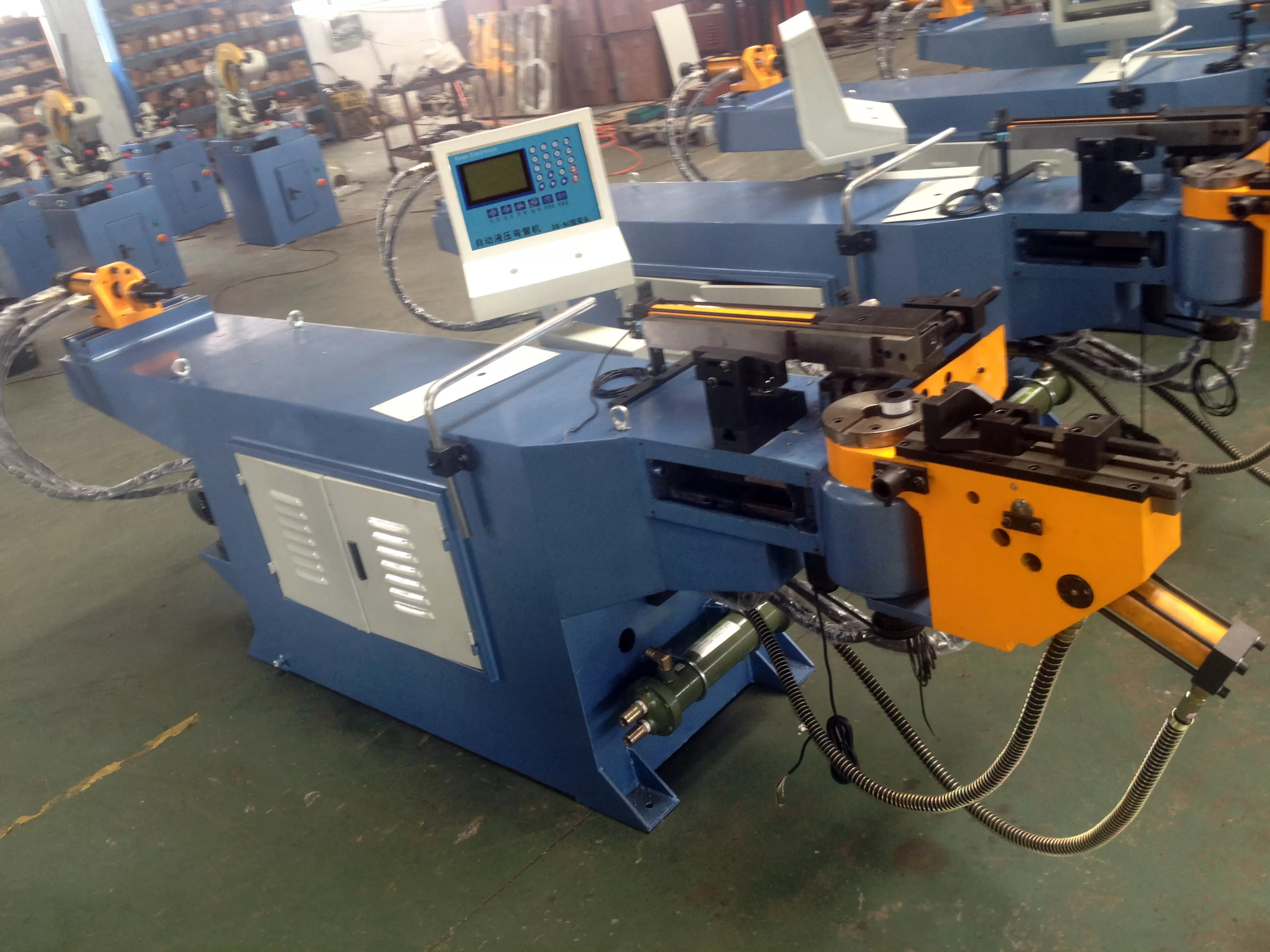
b. Prepare the pipe to be bent in advance, check the diameter, wall thickness and material of the pipe to ensure that the pipe meets the processing requirements.
c. Determine the required bending angle and bending radius, and set the operating parameters of the tube bending machine according to these parameters.
Install pipeline:
a. Correctly install the pipe to be bent on the tube bending machine, usually by clamping or chucking the two ends of the pipe to ensure that the pipe is firmly placed on the bending rod.
Set operation parameters:
a. According to the diameter, wall thickness, material and required bending angle of the pipe, set the appropriate operating parameters of the bending machine, such as bending force, bending speed, etc.
Start bending:
a. Start the tube bending machine, so that the hydraulic system or electric motor exerts appropriate force to make the pipe start to bend.
b. Control the operation of the tube bending machine to gradually bend the pipe to the desired shape.
Monitoring process:
a. During the bending process, the operator needs to carefully monitor the bending state of the pipe to ensure the smooth progress of the bending process and avoid unqualified bending.
test result:
a. After the pipe is bent, stop the tube bending machine in time and remove the bent pipe.
b. Check the bent pipe to ensure that the bending quality meets the requirements and there are no defects such as cracks or deformation.
Cleanup and maintenance:
a. After the operation is completed, clean the tube bending machine and the working area in time to keep the equipment clean and tidy.
b. Regularly inspect and maintain the tube bending machine to ensure the normal operation and safety performance of the equipment.
Record and organize:
a. Record the bending parameters and results of the pipeline, organize relevant operation data and files for subsequent query and analysis.
Maintenance and maintenance include daily maintenance, regular lubrication, electrical part inspection, hydraulic system maintenance, regular inspection, cleaning and maintenance and overhaul maintenance and other steps. Check the equipment status before working every day to ensure the normal operation of the hydraulic system, electric motor and control system. Regularly lubricate the equipment, check the oil level and quality of the hydraulic system, and connect and clean the electrical parts. Regularly inspect major equipment components to ensure they are free from wear and damage. After work every day, perform cleaning and maintenance to prevent dust and dirt from damaging the equipment. When a fault occurs, stop the machine in time for maintenance and prevent the fault from expanding.
Bending requirements: First of all, you must clarify your own bending requirements, including the diameter, wall thickness and bending angle of the pipe. Different models of tube bending machines are suitable for pipes of different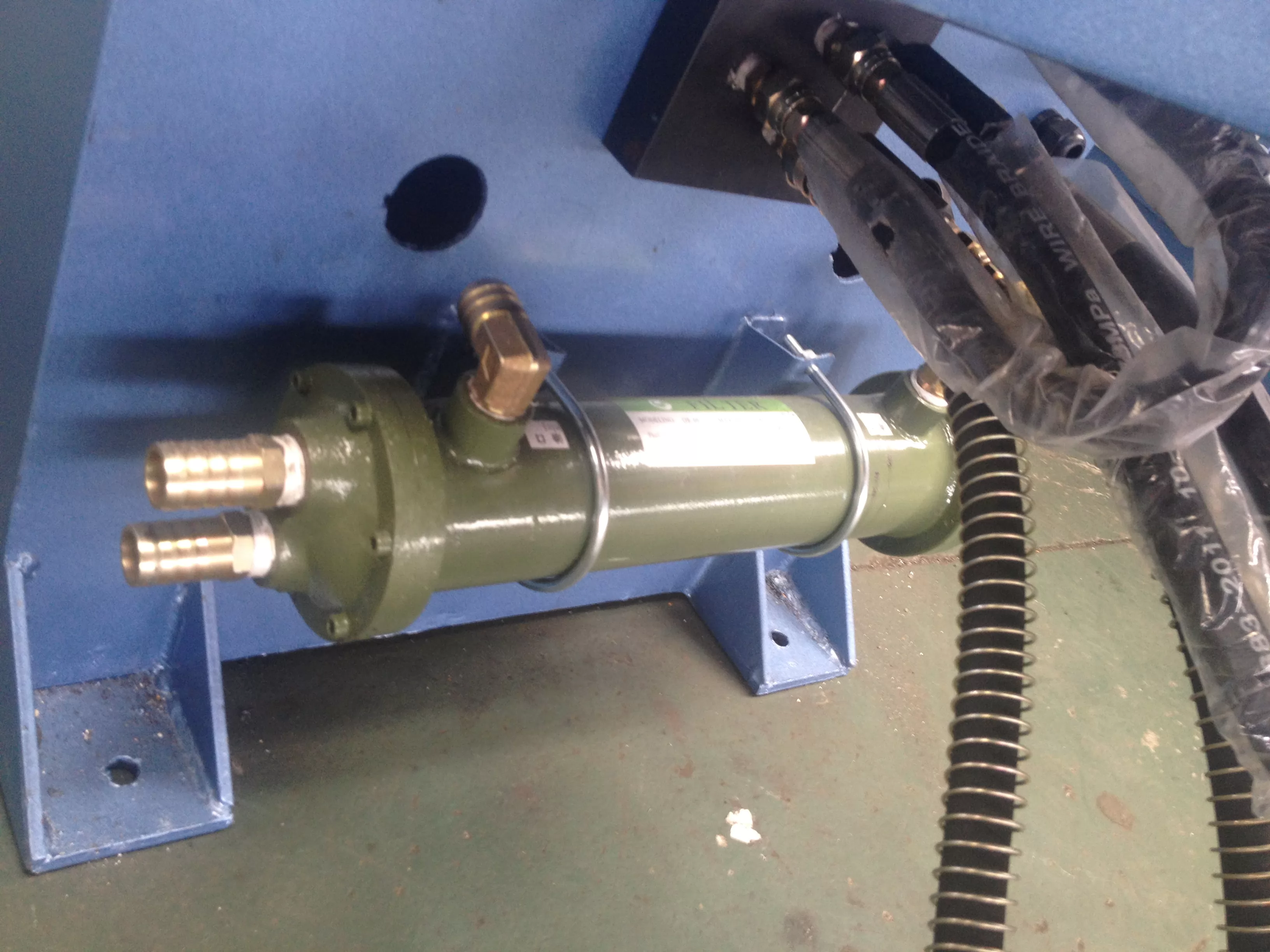 diameters and wall thicknesses, as well as processing of different bending angles.
diameters and wall thicknesses, as well as processing of different bending angles.
Piping Material: Consider the material of the piping, such as steel, stainless steel, copper, aluminum, etc. Pipes of different materials have different requirements for bending machines, and some pipe materials may require higher power and bending force.
Working space: Determine the size and limitations of the working space, select the appropriate size of the tube bending machine, and ensure that the equipment can be operated and moved within the working space.
Bending accuracy: According to the engineering requirements and the use of the pipeline, consider the required bending accuracy. Certain applications may require higher precision pipe benders.
Production capacity: According to the expected production demand, select the appropriate production capacity of the tube bending machine to ensure that the equipment can meet the expected production requirements.
Degree of automation: Considering the degree of automation of the equipment, automated tube bending machines can improve production efficiency and reduce the labor intensity of operators.
Manufacturer's reputation: Choose a reputable manufacturer and brand to ensure that you can buy tube bending machines with reliable quality and timely after-sales service support.
Cost and budget: According to budget constraints, comprehensively consider the price and performance of the equipment, and choose the most cost-effective tube bending machine.
Durmark has strong technical strength and rich experience to design and manufacture high-quality, high-performance tube bending machines. Advanced production equipment and processing technology are the key to ensure product accuracy and quality. High-quality material selection and good customer reputation . Choose Durmark manufacturer, you can get tube bending machines with stable performance and reliable quality, and enjoy satisfactory after-sales service support.
In this article, we have made a comprehensive introduction and discussion on the tube bending machine, from its definition and working principle to classification and application fields, to the correct use method and maintenance points, hoping to provide readers with in-depth understanding and guidance. If you have more questions or need for in-depth communication, please feel free to contact Durmark !
.png)


